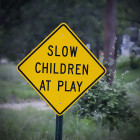
On College Campuses, Hookahs Are Being Smoked Out
|
If you are concerned about your health, step away from the hookah. The belief that the ornate water pipes are far safer than cigarettes may be going up in smoke. Researchers found that the water in the hookah only filters 5 percent of the nicotine contained in the smoke. Hookahs are gaining in popularity on college campuses across the country and the American Lung Association is making anti-hookah legislation a top priority. “Teens and young adults are initiating tobacco use through these hookahs with the mistaken perception that the products are somehow safer or less harmful than cigarettes,” Paul G. Billings, a vice president of the American Lung Association, told the New York Times. “Clearly that’s not the case.”
The danger lies in how hookahs are smoked. Hookah sessions usually last about an hour as hoses attached to the pipe are passed around. In a typical session a smoker could inhale the equivalent of 100 cigarettes while also exposing themselves to tuberculosis and herpes through the communal hoses. Cities are beginning to take notice, passing ordinances to limit the amount of new hookah bars opening and college campuses are rewriting anti-smoking rules to outlaw hookahs.








